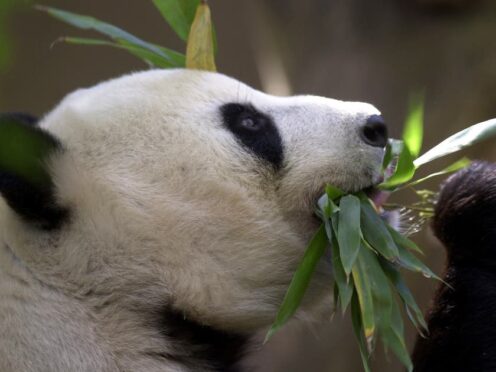
China plans to send a new pair of giant pandas to the San Diego Zoo, renewing its long-standing gesture of friendship toward the United States.
It comes after nearly all the iconic bears on loan to US zoos were returned as relations began to sour between the two nations.
San Diego Zoo officials told The Associated Press that if all permits and other requirements are approved, two bears – a male and a female – are expected to arrive as early as the end of summer, about five years after the zoo sent its last pandas back to China.
“We’re very excited and hopeful,” said Megan Owen of the San Diego Zoo Wildlife Alliance and vice president of Wildlife Conservation Science.

“They’ve expressed a tremendous amount of enthusiasm to re-initiate panda cooperation starting with the San Diego Zoo.”
In November, Chinese President Xi Jinping raised hopes his country would start sending pandas to the US again after he and President Joe Biden convened in Northern California for their first face-to-face meeting in a year and pledged to try to reduce tensions.
China is considering a pair that includes a female descendent of Bai Yun and Gao Gao, two of the zoo’s former residents, said Ms Owen, an expert in panda behavior who has worked in San Diego and China.
Bai Yun, who was born in captivity in China, lived at the zoo for more than 20 years and gave birth to six cubs there. She and her son were the zoo’s last pandas and returned to China in 2019.
Gao Gao was born in the wild in China and lived at the San Diego Zoo from 2003 to 2018 before being sent back.
Decades of conservation efforts in the wild and study in captivity saved the giant panda species from extinction, increasing its population from fewer than 1,000 at one time to more than 1,800 in the wild and captivity.
The black-and-white bears have long been the symbol of the US-China friendship since Beijing gifted a pair of pandas to the National Zoo in Washington DC in 1972, ahead of the normalisation of bilateral relations.

China later loaned pandas to zoos to help breed cubs and boost the population.
Demands for the return of giant pandas, known as China’s “national treasure”, grew among the Chinese public as unproven allegations that US zoos mistreated the pandas flooded Chinese social media.
Fears over the future of so-called panda diplomacy escalated last year when zoos in Memphis, Tennessee and Washington DC returned their pandas to China, leaving only four pandas in the United States, all at the zoo in Atlanta. That loan agreement expires later this year.
Many loan agreements were for 10 years and often were extended well beyond. But negotiations last year to extend the agreements with US zoos or send more pandas did not produce results.
China watchers speculated that Beijing was gradually pulling its pandas from Western nations due to deteriorating diplomatic relations with the US and other countries.
On November 15, a week after the National Zoo’s pandas departed for China, Mr Xi spoke at a dinner in San Francisco with American business executives and signaled that more pandas might be sent.
He said he learned the San Diego Zoo and people in California “very much look forward to welcoming pandas back”.
“I was told that many American people, especially children, were really reluctant to say goodbye to the pandas and went to the zoo to see them off,” Mr Xi said.
The San Diego Zoo continued to work with their Chinese counterparts even after it no longer had any pandas.

Enjoy the convenience of having The Sunday Post delivered as a digital ePaper straight to your smartphone, tablet or computer.
Subscribe for only £5.49 a month and enjoy all the benefits of the printed paper as a digital replica.
Subscribe